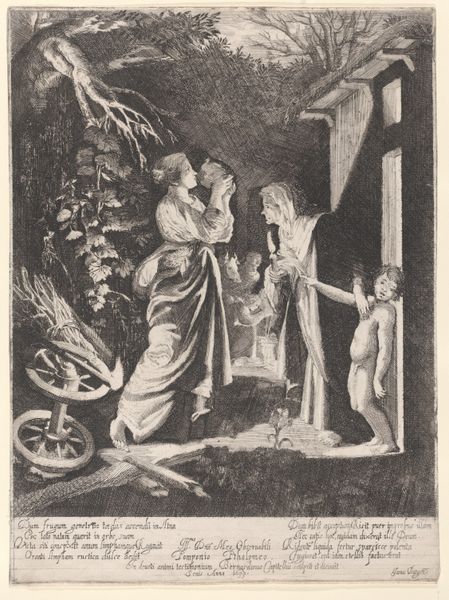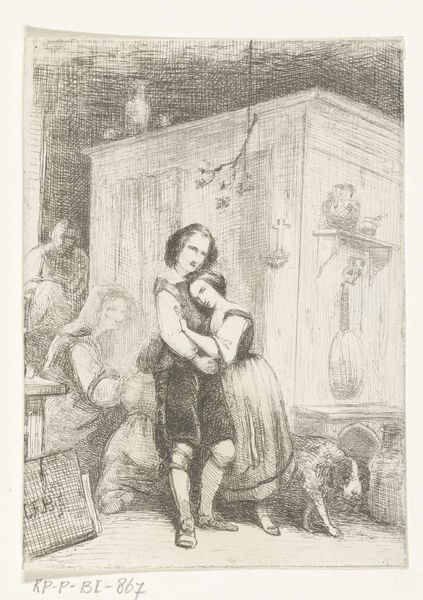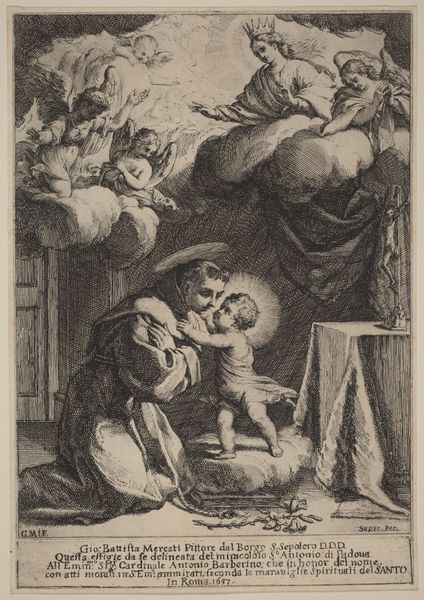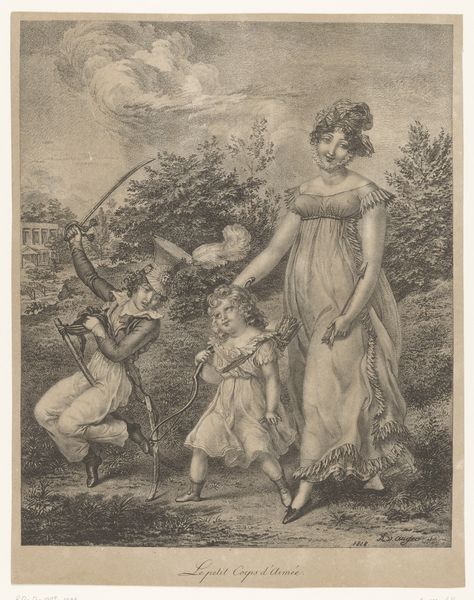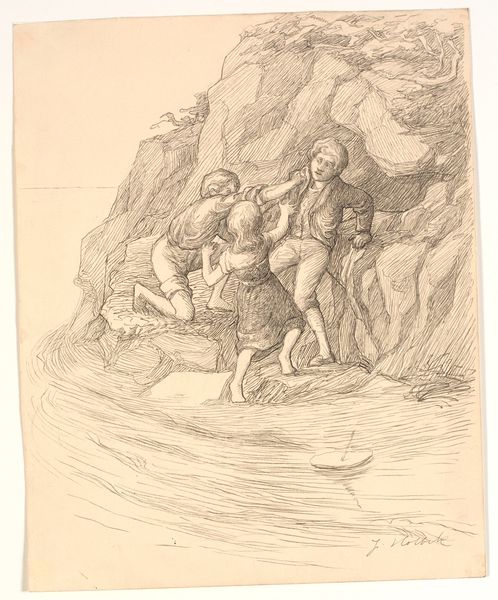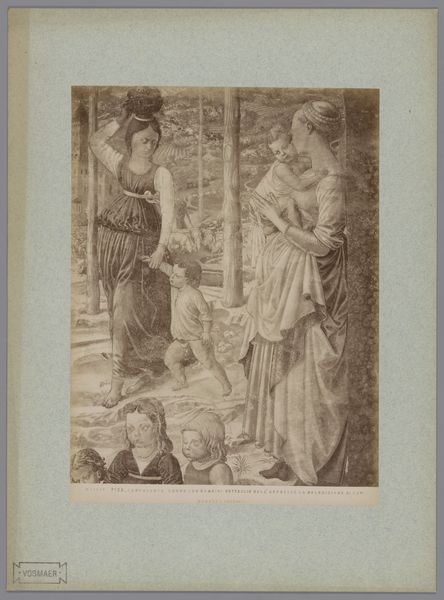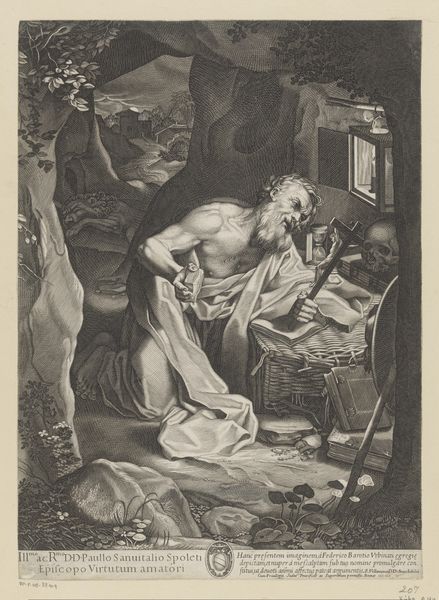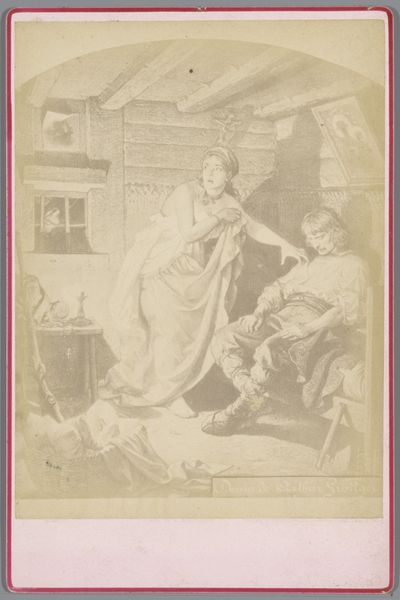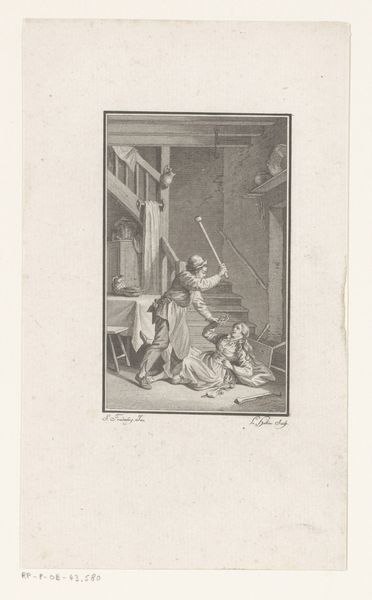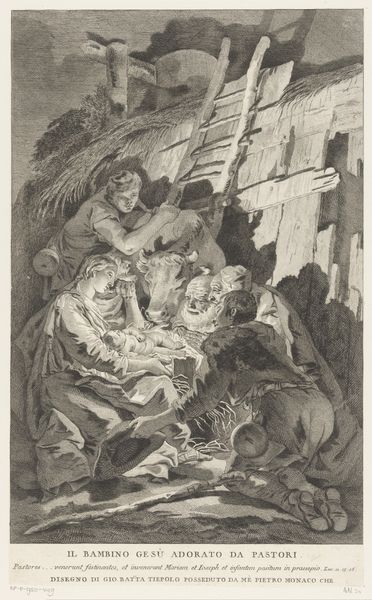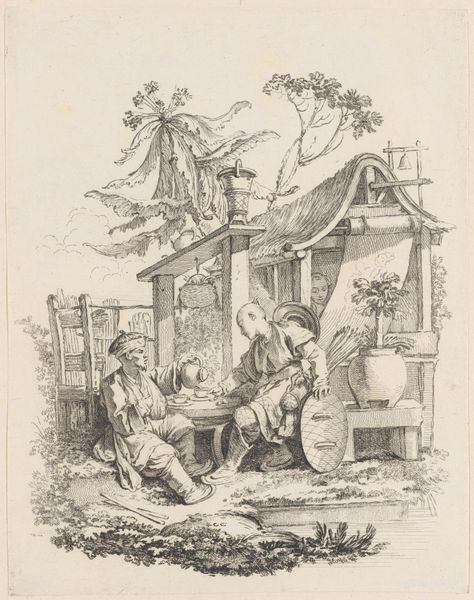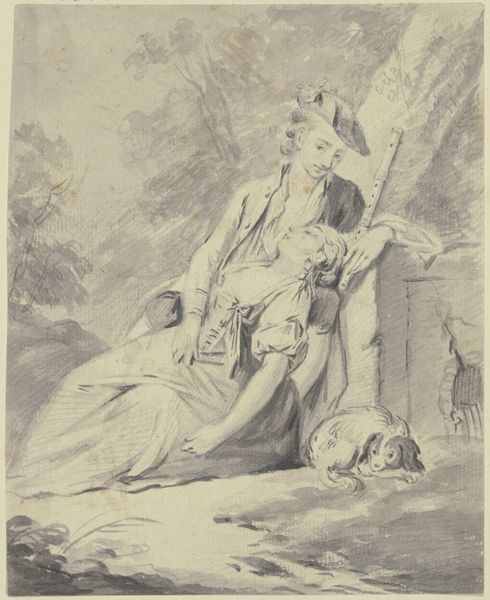
Peter and His Children Visited by Three Flying Figures c. 1783
0:00
0:00
drawing, ink, pencil, pen
#
pencil drawn
#
drawing
#
narrative-art
#
pencil sketch
#
fantasy-art
#
charcoal drawing
#
figuration
#
ink
#
pencil drawing
#
pencil
#
pen
#
pencil work
#
watercolor
Dimensions: overall: 11.3 x 6.9 cm (4 7/16 x 2 11/16 in.)
Copyright: National Gallery of Art: CC0 1.0
Curator: Looking at this sketch, “Peter and His Children Visited by Three Flying Figures” created around 1783 by Thomas Stothard, I immediately notice the contrast between the earthly figures and the ethereal beings above. What strikes you first? Editor: The scene is bathed in a curious light, emphasizing the figures' relationship to their immediate surroundings—a modest dwelling and untamed nature. There is also what appears to be, based on a close reading of the visible hatch marks, a crude rendering technique in how he draws the structure, but also a deft, quick rendering in his strokes of ink and watercolor in how he layers each figure. Curator: I'm drawn to the power dynamics at play. Here, we see Peter and his children gazing upwards, seemingly at the mercy or wonder of these winged figures. It brings to mind narratives of patriarchal systems intertwined with mythical interventions. Editor: But what's interesting is Stothard's approach to representing these flying figures. They’re not entirely divorced from their material forms; they are, instead, presented as muscular and somewhat corporeal. Stothard grounds this mythological moment with laboring bodies from workshops or studies. Curator: It speaks to the eighteenth-century fascination with both the classical and the fantastical. Yet, it also reflects the limited social mobility of the time, where divine intervention or extraordinary circumstances might be the only avenues for upward mobility for those like Peter and his children. Editor: Consider also the social fabric that sustained an artist like Stothard. His craft, relying on pens and watercolors, allowed him to create narrative scenes meant to evoke not only spiritual awe, but a sense of domestic labor, too. A family, gazing and reaching upwards toward mythologized figures could have been viewed as aspirational but the materiality is rooted in realism. Curator: The expressions on the children's faces invite such complex interpretation. Stothard seems to subtly highlight their longing, mirroring the powerlessness of women within these structures. Editor: I think viewing the ink and pencil, you feel a sense of something being ‘thrown together’ but it speaks more to Stothard's skill in bringing narrative into mundane experiences. It reminds me that the making of the art reflects and shapes those values too. Curator: Seeing Stothard's blending of reality with fantasy helps me realize these sketches have social relevance, which might resonate across different cultures. Editor: And I see in Stothard’s methods how materials and the modes of their making really can be tools to investigate what labor and living conditions mean for people today.
Comments
No comments
Be the first to comment and join the conversation on the ultimate creative platform.
